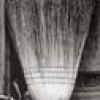
Posted
Hi, first of all many thanks to developers of such a powerful and innovative software.
Reading the forum I came across some suggestions about a piano roll view for the figure editing window. I too completely share this idea, it would be great to be able to see the actual output, (the result of the interpretation) and also be able to edit the figures (in fact notes) according to the taste. But this also requires to be able to edit the notes outside the chord playing. Changing the interpretation parameters are affecting the whole phrase or midi recording so they are great for the start. To shift some notes outside the current chord, maybe a snap on-off feature (chord/scale snap) would be quite useful.
Simply I am happy with all the interpretation parameters, the only thing needed is extensive editing of the notes outside what the interpretation imposes.
Thanks in advance
Sa., 25.07.2009 - 11:49 Permalink
Hello,
I can support fully also the wishing for a controling and may be correcting possibility for the results of the rendering.
So a piano roll and/or an event liste and /or an editor with visible notes would be great, from my view all three would be the ideal. But also one out of the three would further improve the possibilities strongly.
Anyway, its clear, as you (Andre) said, that this things needs time.
Best wishes
Alfred
So., 26.07.2009 - 17:13 Permalink
I agree with you that a visual output would be very helpful in order to understand the various effects that interpretation settings have on the renderer. A certain option might only affect a couple notes here and there and it is rather difficult to tell this from listening only. According to the nature of a renderer, an output piano roll would however not be editable. Its purpose is visual control only.
Synfire can play notes outside the chord, and it does so all the time, but depending on your interpretation settings, other constraints might influence the voice leading such that these notes don't occur very often.
The most influential factors are
1) Step widths in the segment (making use of accidentals ***)
2) Voice leading strategy ("none" and "weak" are most relaxed)
3) Choice of vertical scale (use 8,9,10 note scales for more flexibiliy)
4) Cooperative mode (turn off for relaxed constraints)
At this time Synfire won't play notes outside the scale, but it can switch the scale at any time, for any duration, even without changig the chord. The difficulty is to know which scale includes the desired note. We are experimenting with different solutions to make this easier to find out.
One possible workflow would be to force individual symbols in a segment to some desired pitch and have Synfire find the appropriate deviating harmony for that.
***) Although the finest resolution is 4 symbolic pitches per scale step (1, #1, b2, 2), this is for symbol notation only. The physical constraints of 12TET tuning only allow for a half-tone step as a minimum. The renderer therefore "rounds up" very small steps to the currently smallest possible pitch increment in the given context.
So., 26.07.2009 - 17:55 Permalink
When you say choice of vertical scale, does this also imply that you must use the cyan "V" symbols?
So., 26.07.2009 - 18:10 Permalink
No, the symbol type doesn't matter. I mean the vertical scale choice for the harmonic context (progression).



